Premium Only Content

The 7 Churches Rev 1 - Pastor Joan
The 7 Churches Rev 1 - Pastor Joan -
This isn't the end... It's just the beginning.
https://rumble.com/user/BiblicalGold
============
About Fair Use
Fair use is a legal doctrine that promotes freedom of expression by permitting the unlicensed use of copyright-protected works in certain circumstances. Section 107 of the Copyright Act provides the statutory framework for determining whether something is a fair use and identifies certain types of uses—such as criticism, comment, news reporting, teaching, scholarship, and research—as examples of activities that may qualify as fair use. Section 107 calls for consideration of the following four factors in evaluating a question of fair use:
1. Purpose and character of the use, including whether the use is of a commercial nature or is for nonprofit educational purposes: Courts look at how the party claiming fair use is using the copyrighted work, and are more likely to find that nonprofit educational and noncommercial uses are fair. This does not mean, however, that all nonprofit education and noncommercial uses are fair and all commercial uses are not fair; instead, courts will balance the purpose and character of the use against the other factors below. Additionally, “transformative” uses are more likely to be considered fair. Transformative uses are those that add something new, with a further purpose or different character, and do not substitute for the original use of the work.
2. Nature of the copyrighted work: This factor analyzes the degree to which the work that was used relates to copyright’s purpose of encouraging creative expression. Thus, using a more creative or imaginative work (such as a novel, movie, or song) is less likely to support a claim of a fair use than using a factual work (such as a technical article or news item). In addition, use of an unpublished work is less likely to be considered fair.
3. Amount and substantiality of the portion used in relation to the copyrighted work as a whole: Under this factor, courts look at both the quantity and quality of the copyrighted material that was used. If the use includes a large portion of the copyrighted work, fair use is less likely to be found; if the use employs only a small amount of copyrighted material, fair use is more likely. That said, some courts have found use of an entire work to be fair under certain circumstances. And in other contexts, using even a small amount of a copyrighted work was determined not to be fair because the selection was an important part—or the “heart”—of the work.
4. Effect of the use upon the potential market for or value of the copyrighted work: Here, courts review whether, and to what extent, the unlicensed use harms the existing or future market for the copyright owner’s original work. In assessing this factor, courts consider whether the use is hurting the current market for the original work (for example, by displacing sales of the original) and/or whether the use could cause substantial harm if it were to become widespread.
In addition to the above, other factors may also be considered by a court in weighing a fair use question, depending upon the circumstances. Courts evaluate fair use claims on a case-by-case basis, and the outcome of any given case depends on a fact-specific inquiry. This means that there is no formula to ensure that a predetermined percentage or amount of a work—or specific number of words, lines, pages, copies—may be used without permission.
From <https://www.copyright.gov/fair-use/>
Welcome to the U.S. Copyright Office Fair Use Index. This Fair Use Index is a project undertaken by the Office of the Register in support of the 2013 Joint Strategic Plan on Intellectual Property Enforcement of the Office of the Intellectual Property Enforcement Coordinator (IPEC). Fair use is a longstanding and vital aspect of American copyright law. The goal of the Index is to make the principles and application of fair use more accessible and understandable to the public by presenting a searchable database of court opinions, including by category and type of use (e.g., music, internet/digitization, parody).
The Fair Use Index tracks a variety of judicial decisions to help both lawyers and non-lawyers better understand the types of uses courts have previously determined to be fair—or not fair. The decisions span multiple federal jurisdictions, including the U.S. Supreme Court, circuit courts of appeal, and district courts. Please note that while the Index incorporates a broad selection of cases, it does not include all judicial opinions on fair use. The Copyright Office will update and expand the Index periodically.
The Fair Use Index is designed to be user-friendly. For each decision, we have provided a brief summary of the facts, the relevant question(s) presented, and the court’s determination as to whether the contested use was fair. You may browse all of the cases, search for cases involving specific subject matter or categories of work, or review cases from specific courts. The Index ordinarily will reflect only the highest court decision issued in a case. It does not include the court opinions themselves. We have provided the full legal citation, however, allowing those who wish to read the actual decisions to access them through free online resources (such as Google Scholar and Justia), commercial databases (such as Westlaw and LEXIS), or the federal courts’ PACER electronic filing system, available at www.pacer.gov.
Although the Fair Use Index should prove helpful in understanding what courts have to date considered to be fair or not fair, it is not a substitute for legal advice. Fair use is a judge-created doctrine dating back to the nineteenth century and codified in the 1976 Copyright Act. Both the fact patterns and the legal application have evolved over time, and you should seek legal assistance as necessary and appropriate.
We hope you find the Fair Use Index a helpful resource. If you are concerned as to whether a particular use is fair, however, or believe that someone has made an unauthorized use of a copyrighted work in a manner that is not fair, it is best to consult an attorney.
Please note that the Copyright Office is unable to provide specific legal advice to individual members of the public about questions of fair use. See 37 C.F.R. 201.2(a)(3)
-
 1:18:01
1:18:01
Glenn Greenwald
6 hours agoWill Trump's Second Term Promote Economic Populism? Matt Stoller On Cabinet Picks To Fight Corporate Power; Should Liberals Cut Off Pro-Trump Friends & Family? | SYSTEM UPDATE #372
148K122 -
 2:26:30
2:26:30
WeAreChange
6 hours agoTrump To Subdue Deranged Opposition! ARRESTS Planned
119K33 -
 1:19:04
1:19:04
JustPearlyThings
7 hours agoWhy MODERN WOMEN Keep REJECTING The Redpill! | Pearl Daily
92.9K52 -
 1:15:03
1:15:03
Man in America
8 hours agoBig Pharma EXPOSED: The HIDDEN Cures They Tried to Bury
21.6K6 -
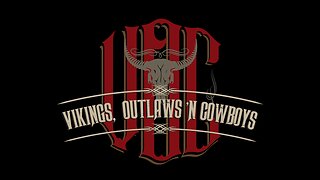 LIVE
LIVE
VikingsOutlawsAndCowboys
9 hours agoVOC SHOW LIVE - #9
178 watching -
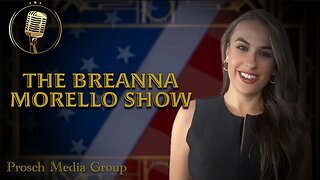 43:22
43:22
PMG
23 hours ago $2.52 earned"Sean Parnell Speaks Out for Tulsi Gabbard and Pete Hegseth; J6 Pardons Needed"
19K7 -
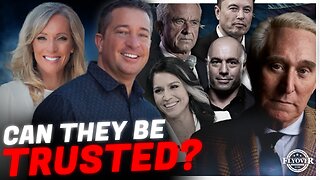 1:14:23
1:14:23
Flyover Conservatives
23 hours agoShifting Alliances: Tulsi, Musk, RFK, Rogan… CAN THEY BE TRUSTED? - Roger Stone | FOC Show
28.7K -
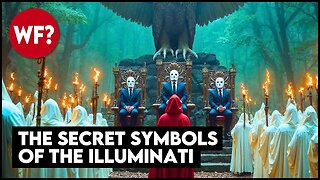 39:01
39:01
The Why Files
8 days agoSymbols of Power: Deciphering the Language of the Secret Elite
113K64 -
 1:07:16
1:07:16
Edge of Wonder
9 hours agoWho Are the Men in Black? The CIA Connection
25.9K4 -
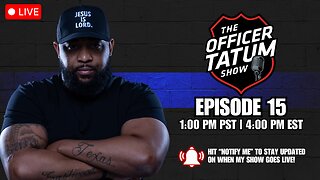 45:17
45:17
The Officer Tatum
10 hours agoLIVE: Scott Jennings INCINERATES CNN, DNC Union BEGS For Money, + MORE | OT Show EP 15
120K135